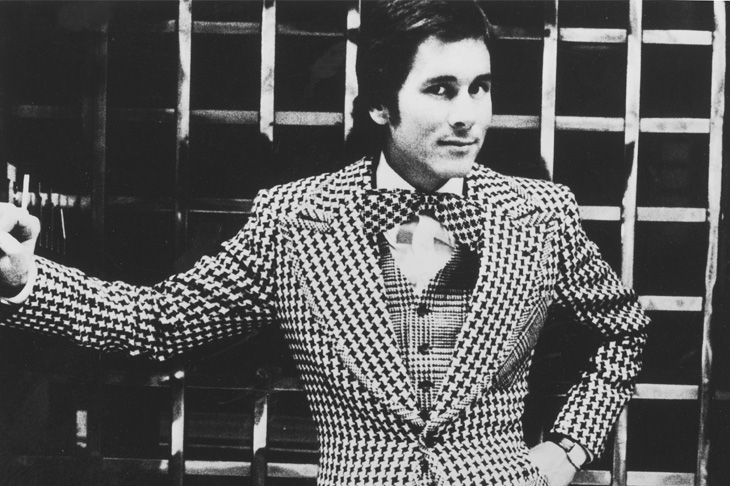The tailor’s art is a triumph of mind over schmatte. Not just in the physical cutting and stitching, but in the faith that style makes content. This, not the question of which way you dress, is the secret compact between tailor and client. ‘Every faculty of his soul, spirit, purse and person is heroically consecrated to this one object, the wearing of clothes wisely and well, so that as others dress to live, he lives to dress,’ Carlyle wrote of the dandy in Sartor Resartus.
Tommy Nutter was one of Tommy Carlyle’s dandies, a ‘clothes-wearing man’ and a ‘poet of the cloth’. From 1969 to 1976, Nutter bestrode the world of tailoring like a Narcissus. Though he could barely manage a backstitch, his designs rewrote the book on male style. Any good English suit carries a whisper of Nutter in the cut of its cloth. Never mind the quality, feel the width of Lance Richardson’s vivid and tragic The House of Nutter.
Born in 1943, Nutter grew up dreaming of Hollywood. At 16 he became a tea boy at the Ministry of Works. Driven ‘practically insane with boredom’, this camp Kipps escaped to the dusty Edwardian dreamworld of Ward & Co., 35 Savile Row: impeccable stitching, fashion-proofed design, declining revenues. Nutter took evening classes in tailoring and worked his way up to the shop floor. Tall, handsome and promiscuous, he mingled after work with ‘top-drawer queers’ such as Francis Bacon at the Rockingham Club in Soho, which Quentin Crisp called ‘the closet of closets’. By 1967, this ‘comely youth from Edgware’ had befriended Brian Epstein’s assistant, Peter Brown.
On Valentine’s Day 1969, Nutter opened the Row’s first new shop in a century. His investors were Brown, a clerk at the House of Lords named James Vallance White, the caterwauling Cilla Black, and the Scouse Svengali, Black’s husband-manager Bobby Willis.









Comments
Join the debate for just £1 a month
Be part of the conversation with other Spectator readers by getting your first three months for £3.
UNLOCK ACCESS Just £1 a monthAlready a subscriber? Log in